Different bioengineering techniques can be implemented, depending on the site, the work involved, the constraints observed, the economic stakes , etc.

Seeding consists of spreading seeds of various herbaceous species on the ground, either by hand or by hydroseeding.
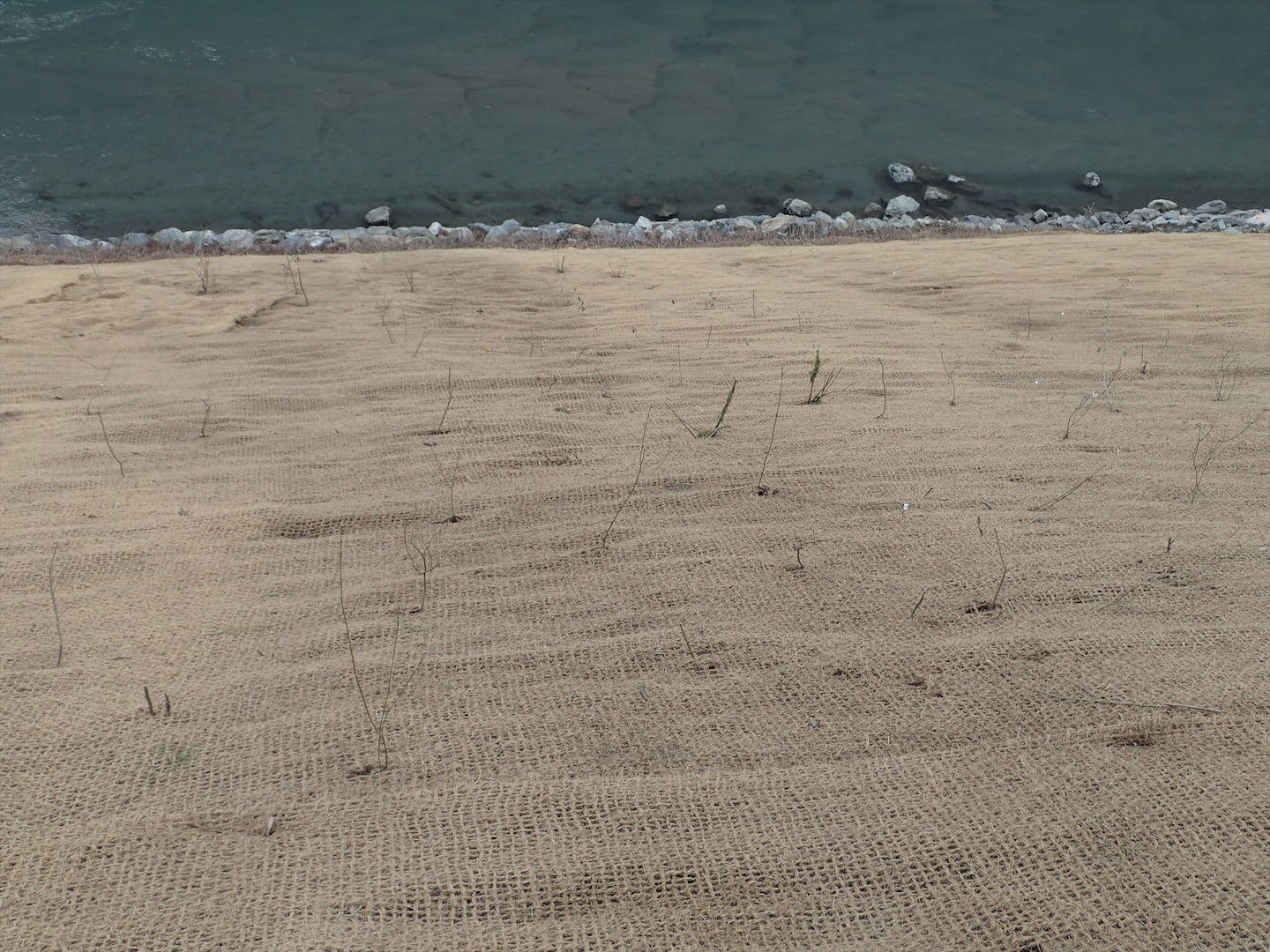
Geotextiles are mats made of natural fibers. Their main functions are to avoid the risk of surface erosion of the soil before the plants start to root, to change micro-climatic conditions (temperature, humidity) and protect the seeds from runoff or rising water.
There are geotextiles with very different technical characteristics (material, weave, grammage etc.) that will be used differently depending on the constraints of the environment and the expected results.
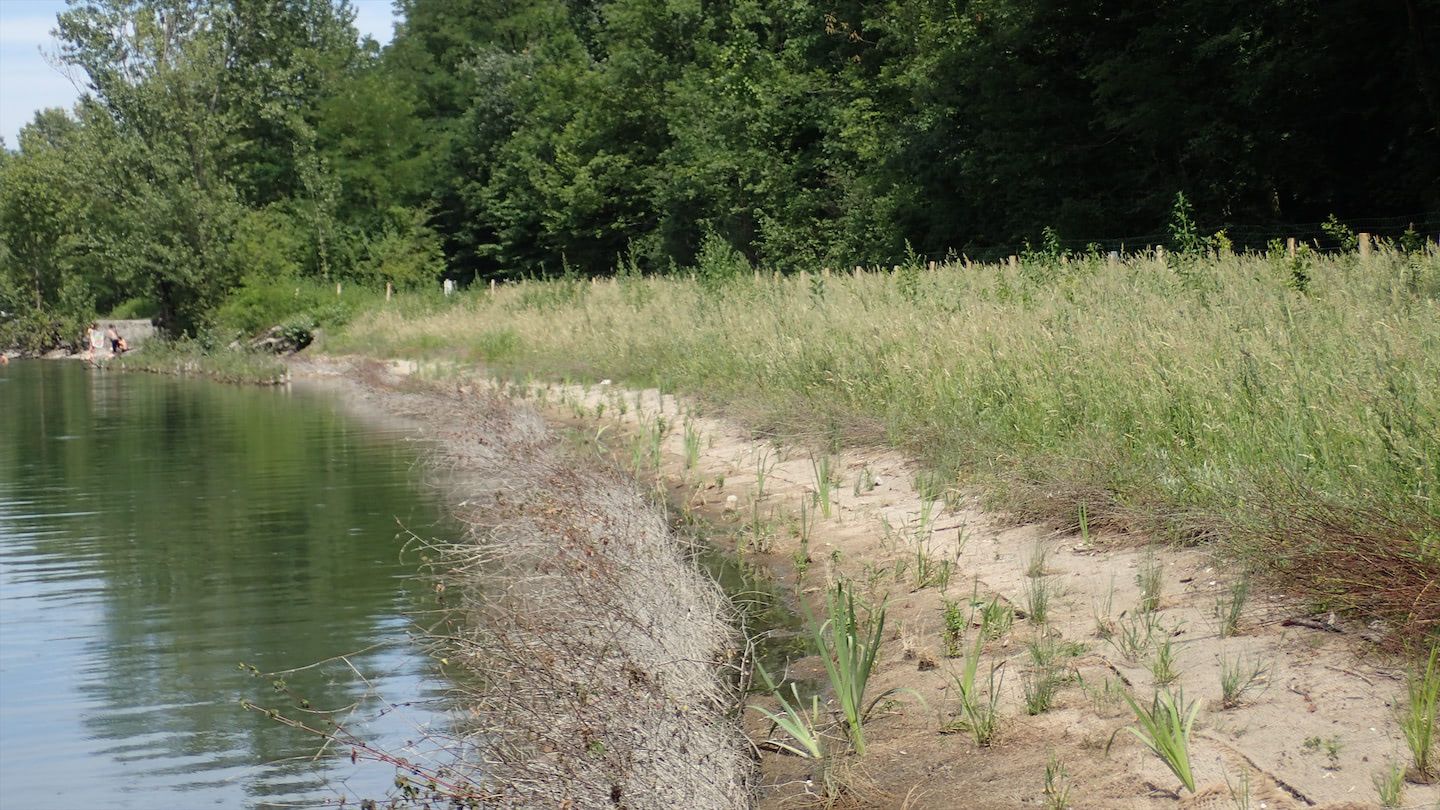
Planting helophytes consists of planting herbaceous plants typical of wetlands, with a high vegetative propagation capacity, in the form of clods taken from the natural environment or from local nurseries.

Woody planting consists of planting woody species, in the form of seedlings, small saplings and/or single stem trees At the foot of the bank, typical species of riparian environments are used.
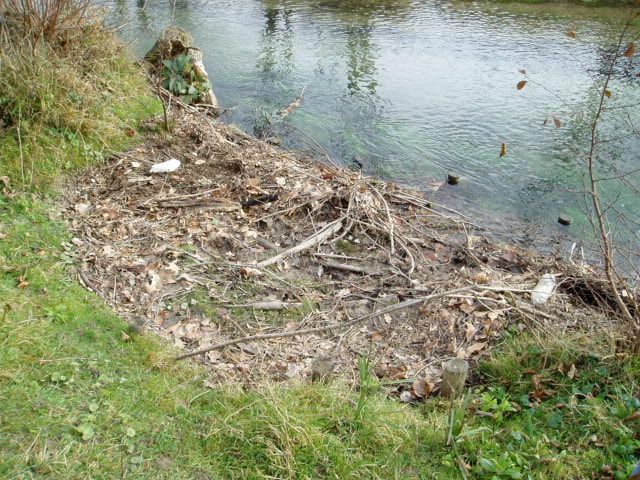
Brush matting consists in a living structure made with a pile of branches and twigs intertwined with gravelly earth materials and attached with stakes and wire.

A cutting is a branch segment of woody or semi-woody species capable of producing numerous shoots. From each cutting a new tree or shrub is born, with the same genetic heritage as the parent plant.
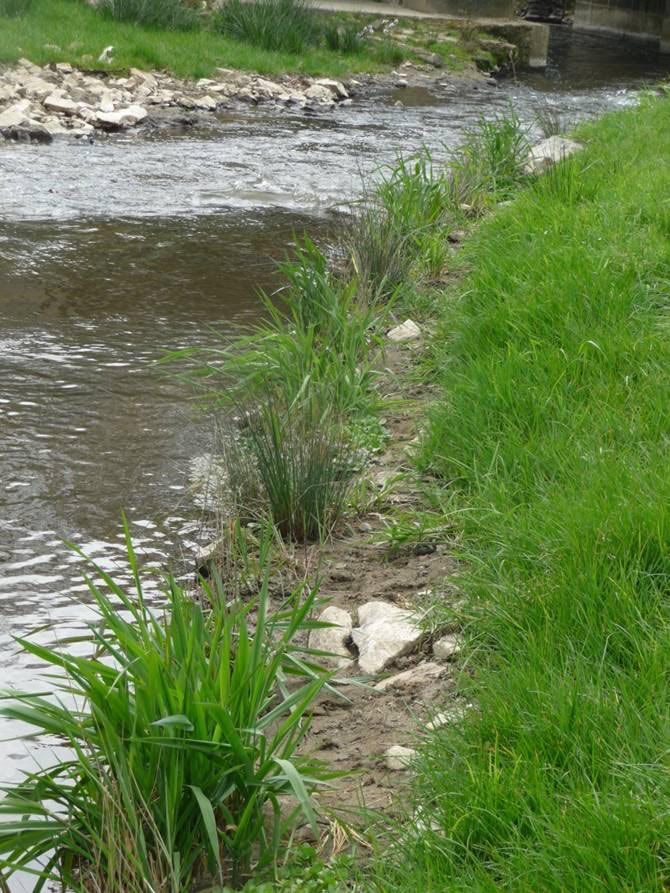
Helophyte fascine is a work of protection / revegetation of the foot of the riverbank, made by fabricating a biodegradable geotextile roll ballasted with earth materials, planted with clods of helophyte species and held to the substrate by a row of piles

Fascine is a technique for protecting the foot of the riverbank by placing living branches capable of growing, in alternation with compacted earth materials, between two rows of piles.
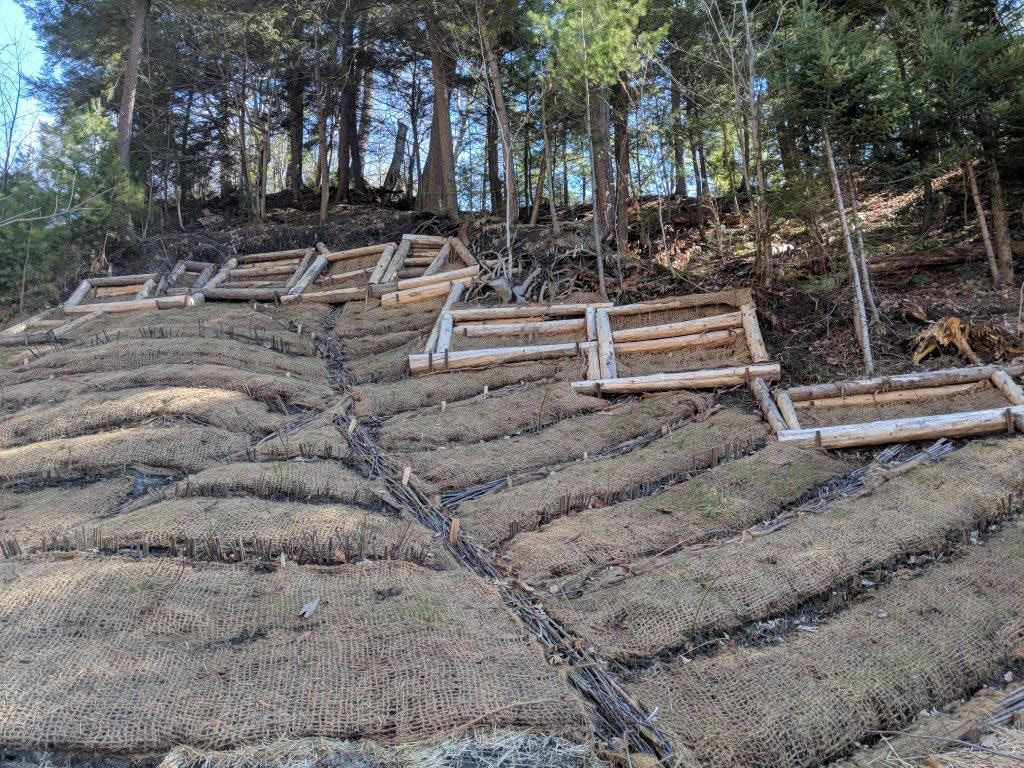
Fascines sunk in trenches and arranged in the gradient as a drainage network.
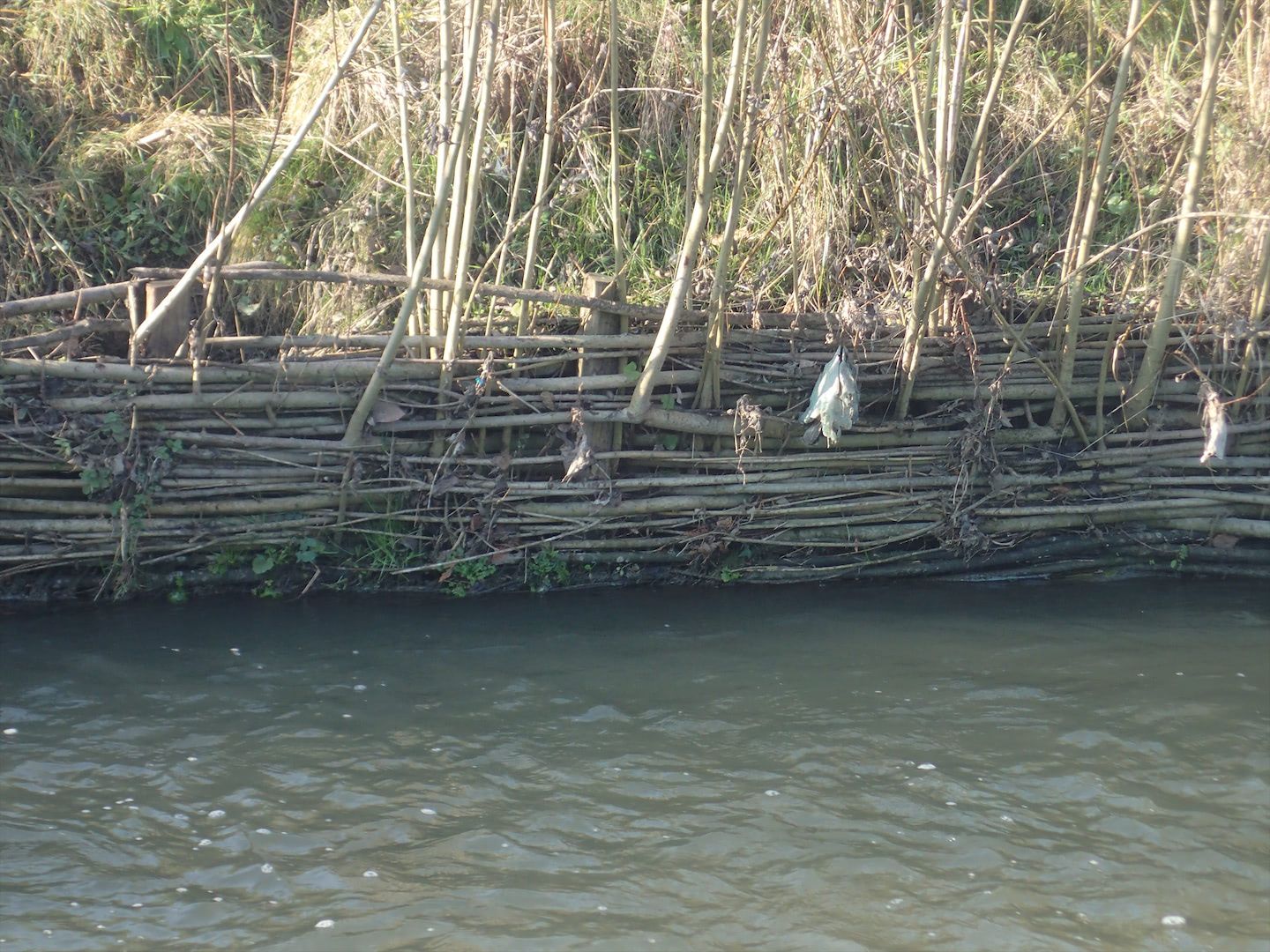
Braiding is a bank foot protection made with live branches, intertwined around stakes.

Layers of branches with shoots constitute a revegetation technique or a protection structure for gradients by applying and fixing to the ground living woody plants capable of immediate recovery and growth.

Beds of plants and seedlings are similar to the use of rooted plants and twigs planted side by side within longitudinal grooves created in a gradient.
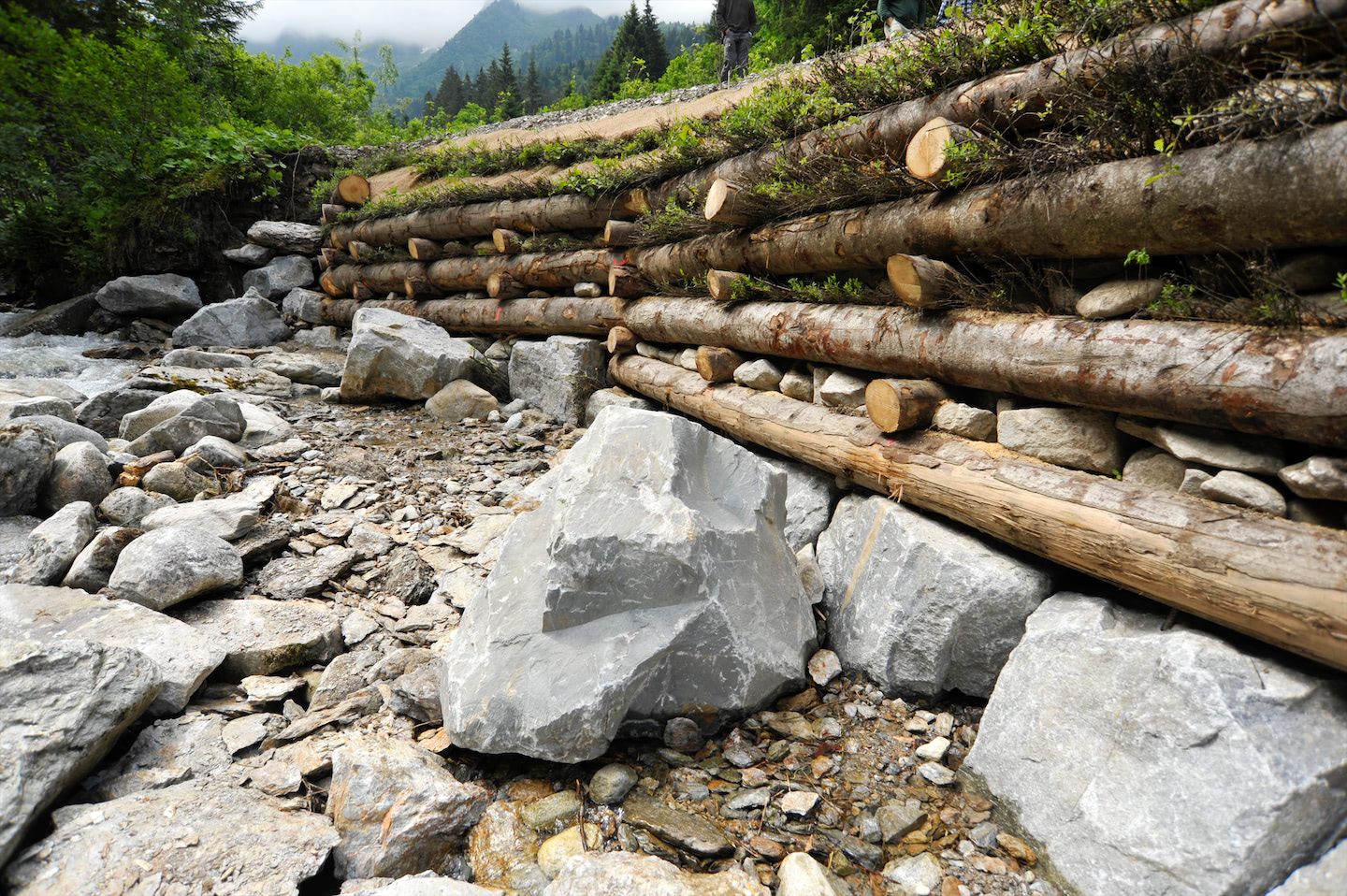
Log structure filled with soil and including living plants (cuttings, plants, seedlings, etc.).

Log surface structure made to retain the soil on steep gradients.
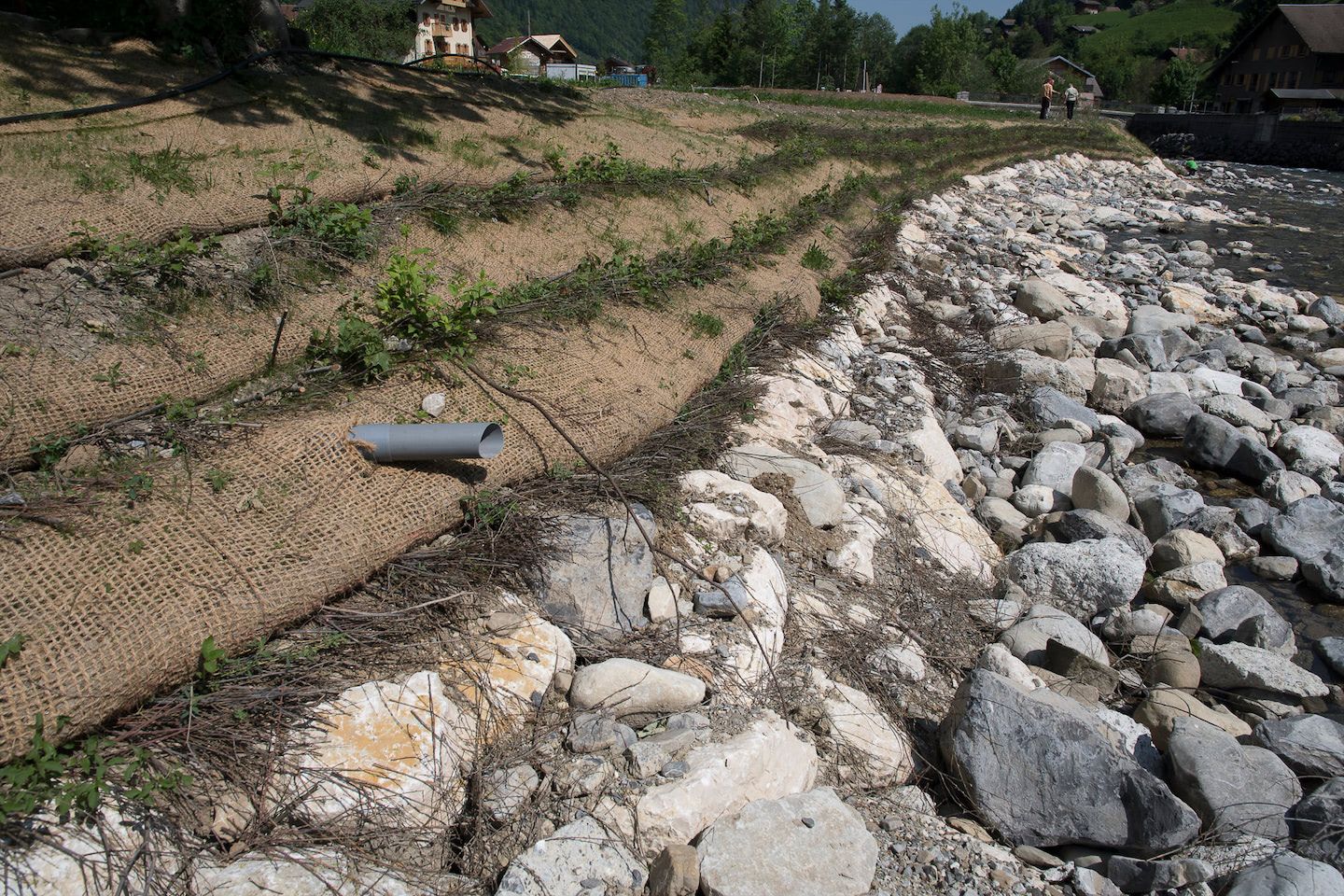
Mixed techniques borrow expertise from civil engineering and bioengineering.
They often combine riprap at the foot of the bank and planting techniques at the top.
Main source of explanatory texts: Biotec www.biotec.fr
